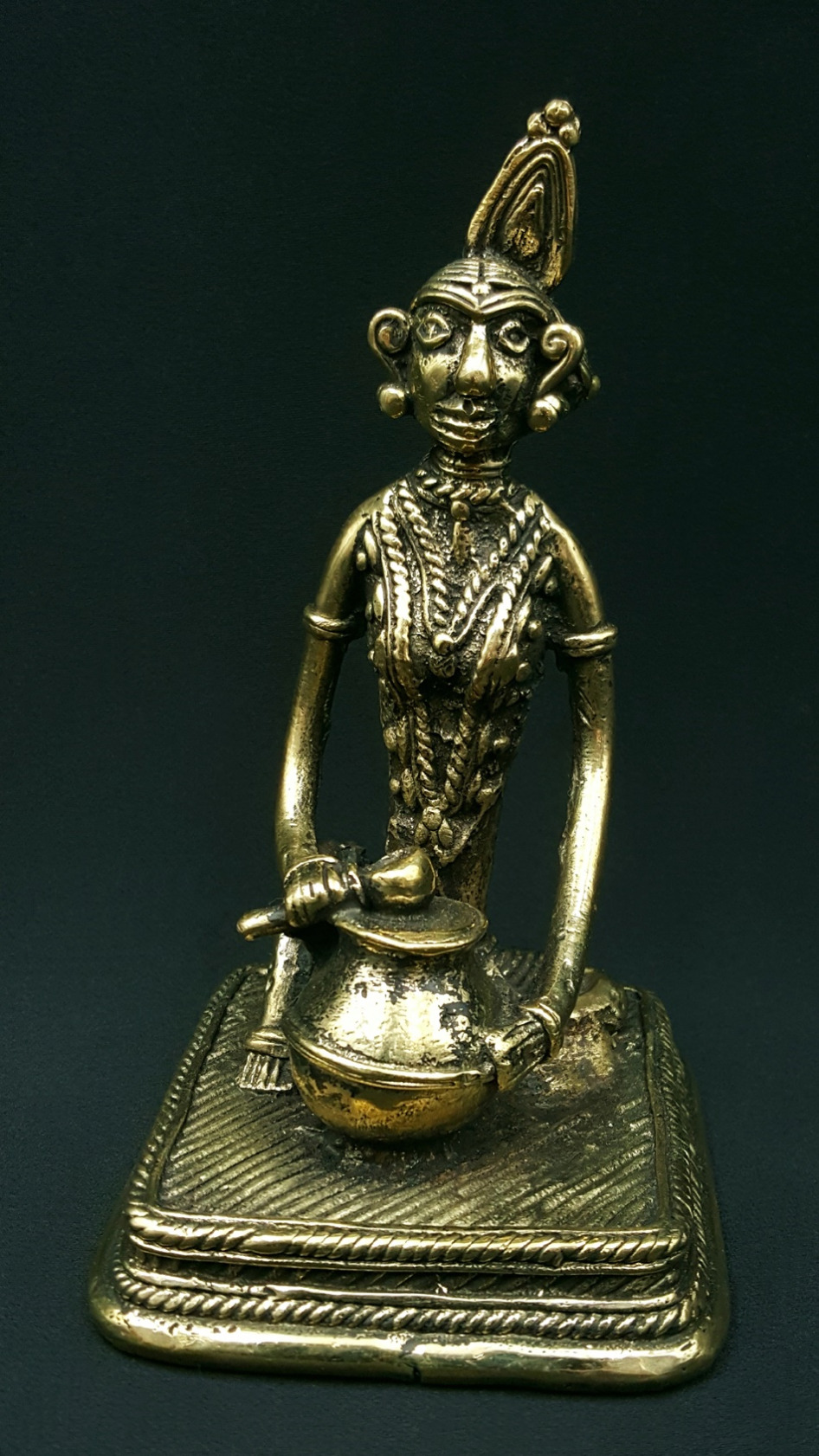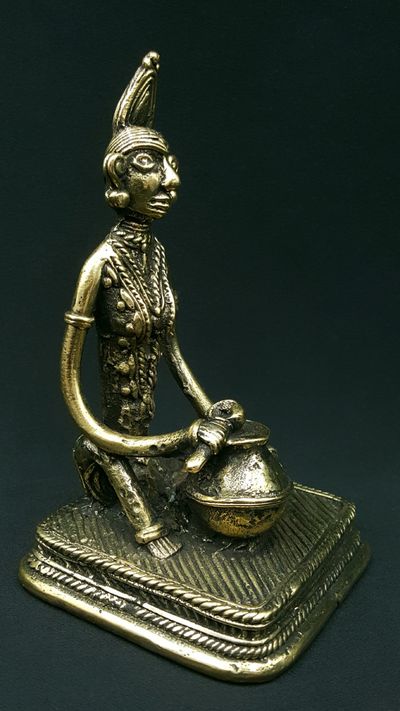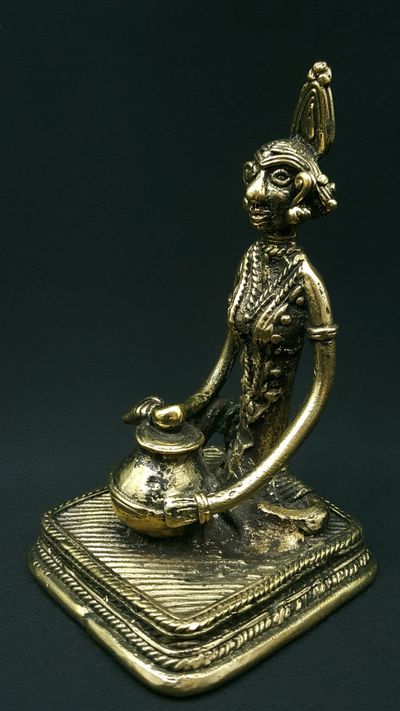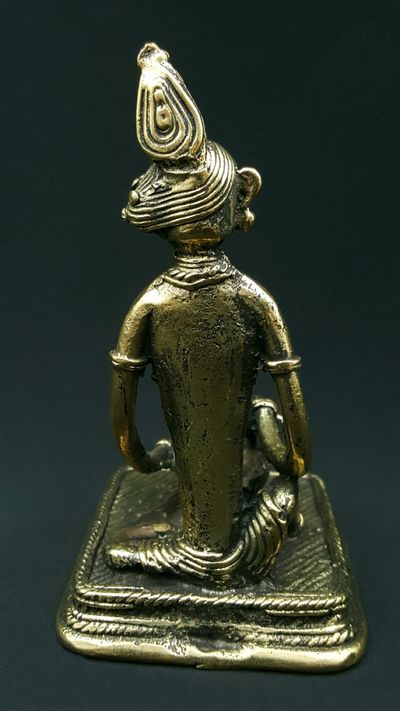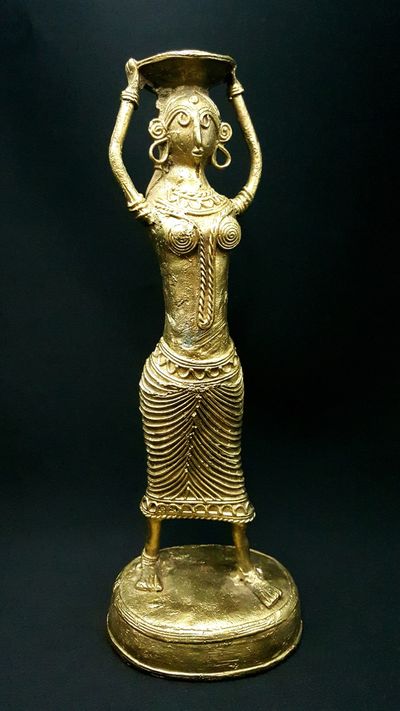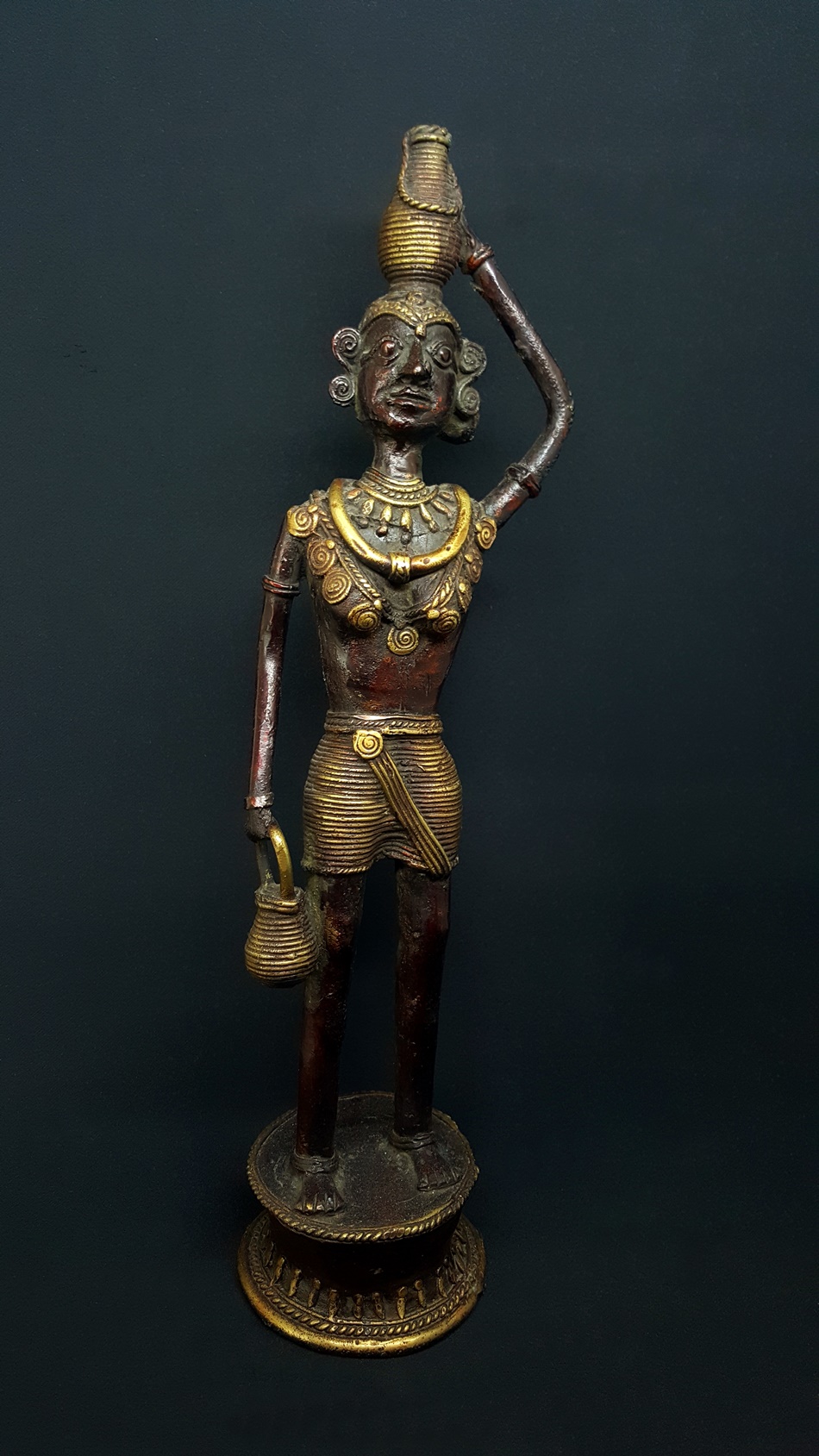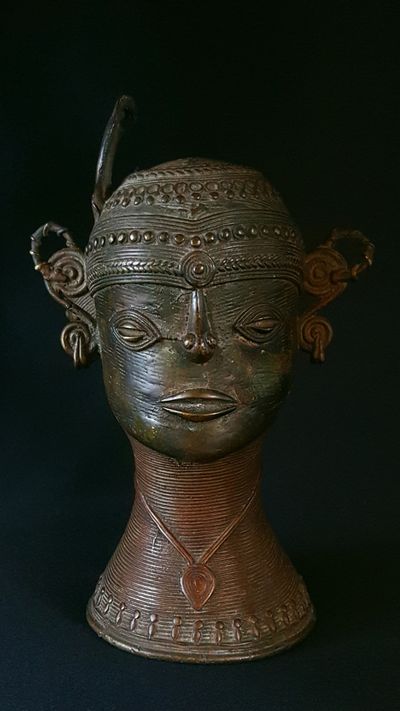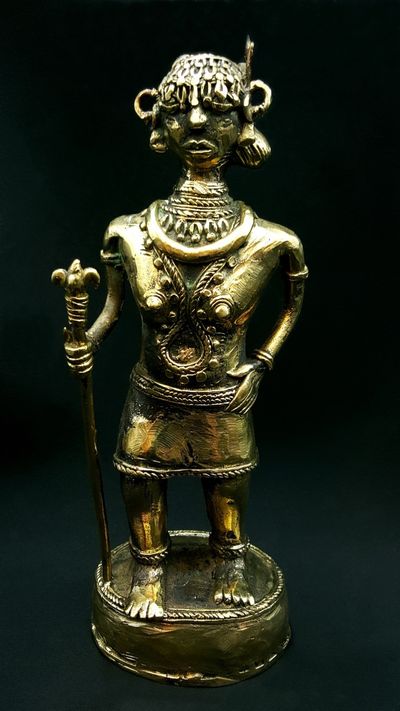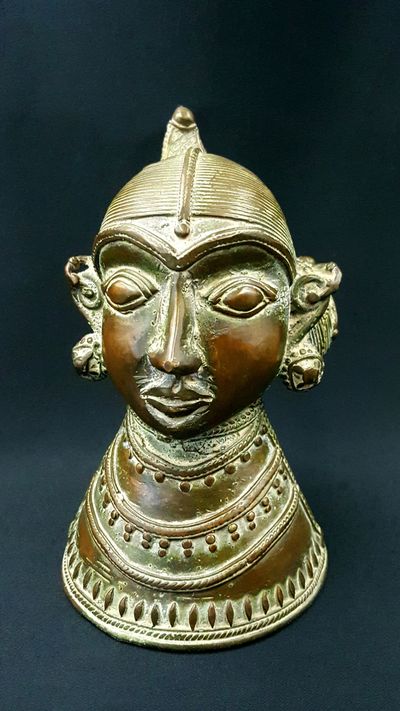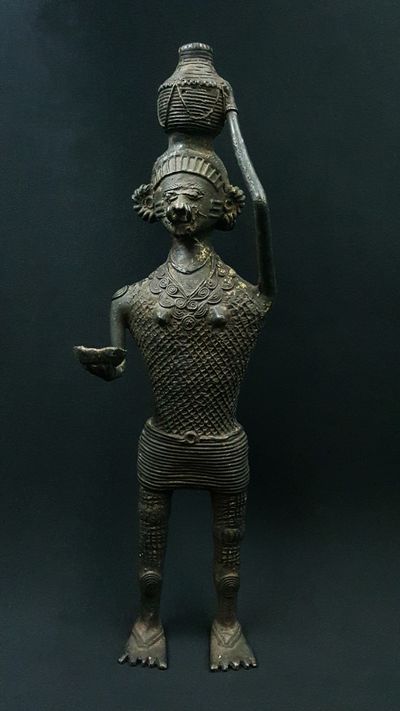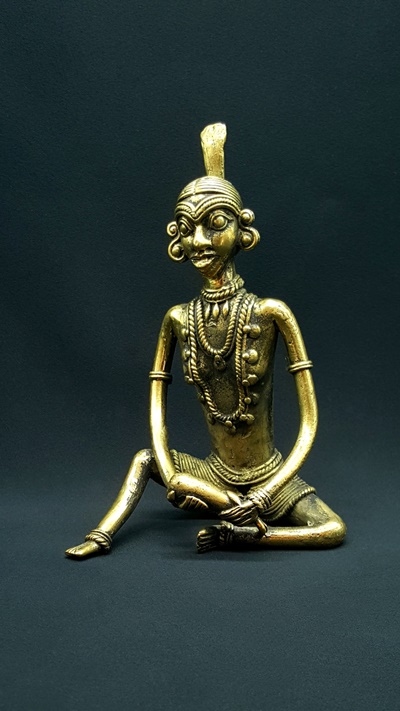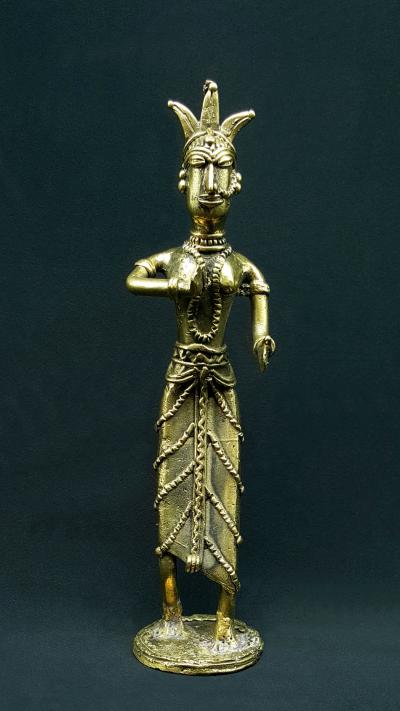Statue Femme assise devant sa jarre
Vie quotidienne
€160.00
Sculpture tribale Bastar de l’Inde du Sud où l’artiste représente une scène de vie courante de la vie quotidienne : la nourriture et l’eau. Beauté au quotidien. En savoir plus...
Hauteur : 12,9 cm
Poids : 0,490 Kg
Art tribal
Technique de la cire perdue - Alliage cuivreux
Origine : Chattisgarh - Inde
Livraison gratuite UE, Norvège et Suisse
Description
L'art tribal
Les tribus, pratiquant l'art Dokra, sont originaires de la région de Bastar, dans l'Inde du Sud (aujourd'hui situé dans l'État de Chattisgarh), elles ont émigré plusieurs siècles auparavant et se sont installées un peu partout en Inde du Nord au Sud.
La plupart ont gardé leur tradition (art culinaire, vestimentaire, fêtes...) et leur religion animiste.
L'art Dokra : un savoir millénaire dans la fabrication de statues
Cet art tribal Indien artisanal n'a pas changé depuis des millénaires (+ de 4000 ans) et la technique utilisée est toujours celle de la cire perdue : un modèle grossier en argile est réalisé puis recouvert de cire par l'artiste qui va lui donner sa forme définitive avec ses détails. L'ensemble est à nouveau recouvert d'un mélange argileux puis chauffé dans un foyer ouvert où un alliage cuivreux sera coulé. Voir Blog
Les objets produits par les artistes Dokra peuvent être de nature usuels : coupelle, bougeoir... des instruments de musiques (cuivres), ou bien artistiques tels que des bijoux, des animaux : chevaux, éléphants, tortues..., des statues d'hommes et femmes représentant des scènes de vies quotidiennes et des divinités hindous adoptées par les tribus : Ganesh, Lakshmi...
Cette femme effectue une tâche, la cuisine, à la fois courante et banale, mais aussi des plus importantes pour la vie de la famille. La posture la plus confortable en Inde est l'assise en tailleur ou bien sur les talons, jeunes et anciens n'ont aucun mal à l'adopter grâce à une pratique quotidienne. La jarre en terre reste encore aujourd'hui un ustensile primordial, dans beaucoup de familles à la campagne où le plastique n'a pas encore remplacé les nombreuses poteries. Elle possède l'avantage de garder l'eau fraîche, à l'abri des nuisibles et elle est fabriquée localement.
L'artiste a choisi de parer cette femme de nombreux colliers. La coiffure en chignon est typique, une coiffe en plume ajoute une touche festive à cette scène de vie quotidienne.
